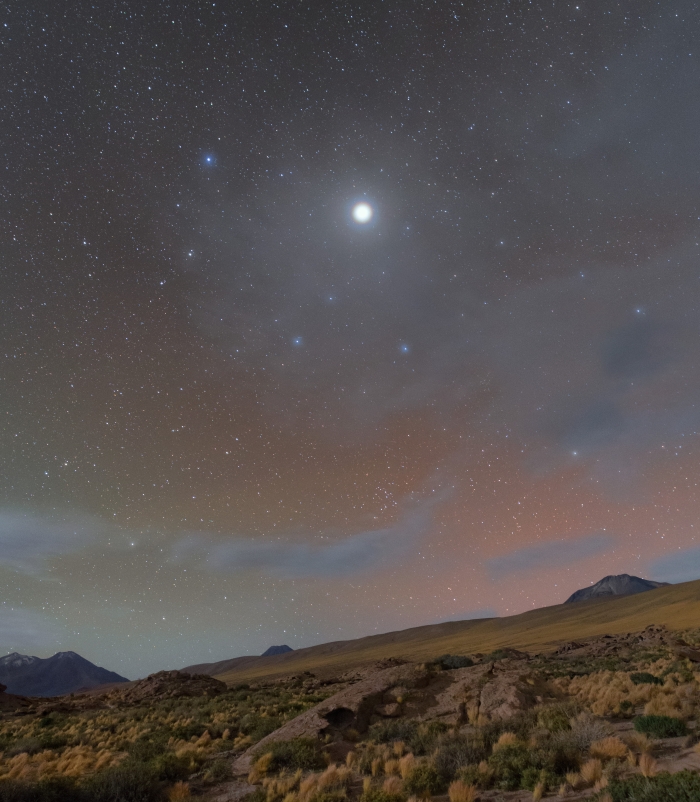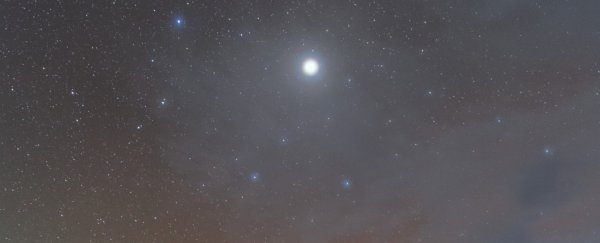A stunning photo recently released by the ESO shows Jupiter as you've likely never seen it before - ringed by a halo of light as it shines down on the Atacama desert in Chile.
That halo is an optical phenomenon, known as a corona. You've likely seen it around the Moon, or maybe even the Sun, but it's only rarely seen around planets such as Jupiter.
The phenomenon becomes visible when light from a shining object passes through Earth's atmosphere. If there are tiny ice crystals, or droplets of water, in the light's path, they can diffract it as it passes through, creating a halo.
It's a gorgeous spectacle - but not to be confused with the other kinds of corona, as you'll see below.
 (ESO/P. Horálek)
(ESO/P. Horálek)
You've no doubt heard of the solar corona. It's a halo of plasma that surrounds the Sun, most visible during a total solar eclipse. It extends millions of kilometres into space in all directions around the Sun.
Every star has one. The Sun's is a well studied phenomenon, and it can reveal the interesting dynamics of the solar magnetic field, the solar wind, and even activity on the solar surface.
Planets can have coronas too! Unlike stellar coronas, they are not made up of plasma; instead, they're the upper levels of the planetary atmosphere, also known as the exosphere, where the density of neutral particles is extremely low.
Earth's, for example, is called the geocorona, and it glows in far-ultraviolet due to the scattering of those solar rays off neutral hydrogen atoms. Mars also has hydrogen in its corona, in addition to oxygen and carbon.
Jupiter has one of these too, also with hydrogen. It's unlikely we'd be able to see it in an optical wavelength photograph taken from Earth's surface, though.
Finally, there are geological coronae. These are circular or oval-shaped features in the rock on the surface of a planet, such as the Fotla Corona on Venus. As Jupiter doesn't have a solid surface, it doesn't have any of this type of corona at all, as far as we know.
You can download the full-sized photo of Jupiter's optical halo, as well as wallpaper versions, here.
